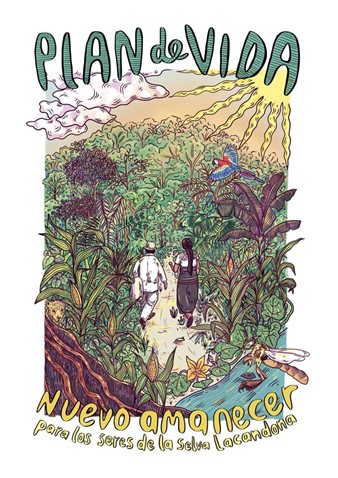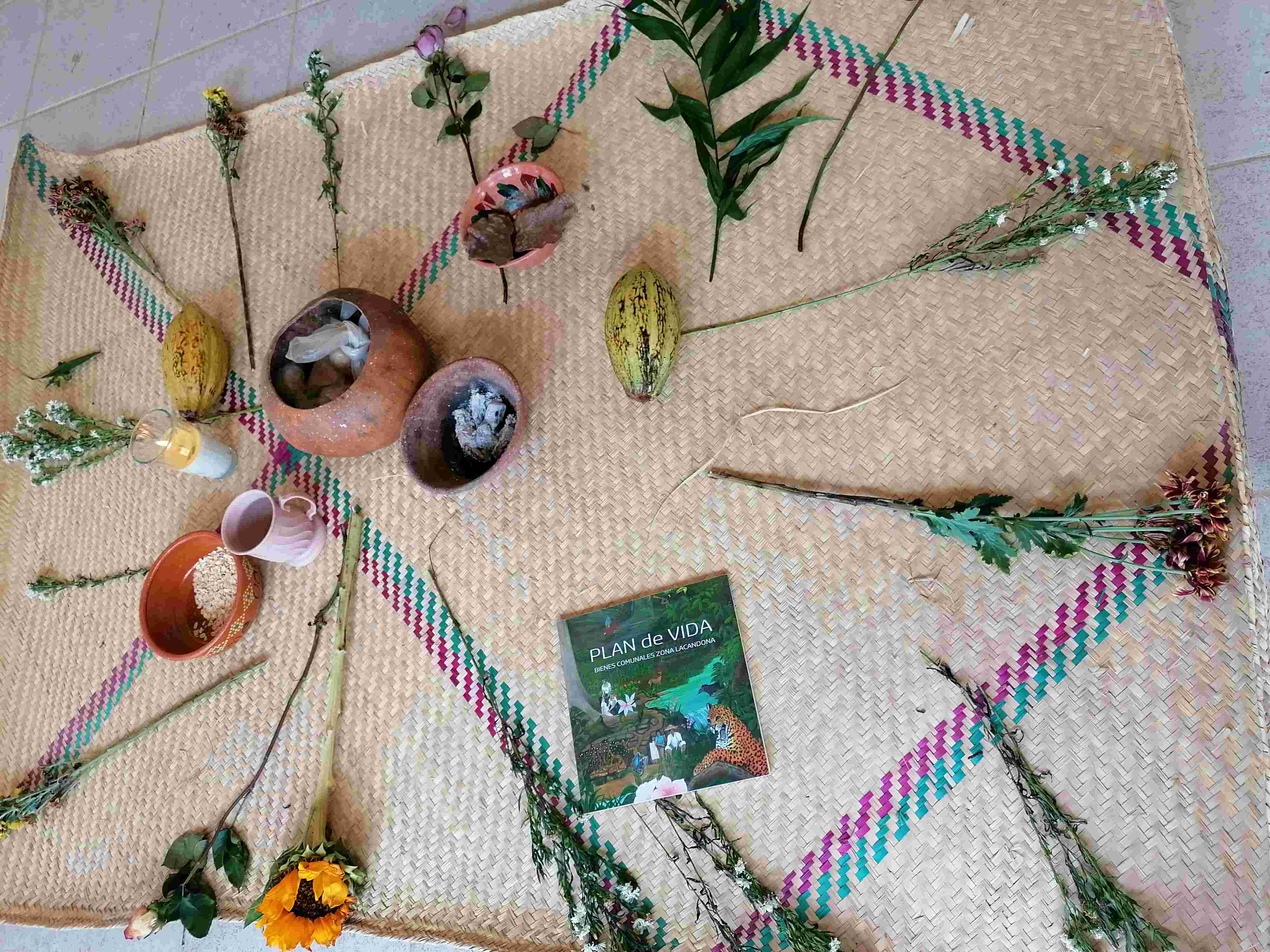Plan de Vida
The Selva Lacandona (Lacandon Jungle) is a region of important ecological and cultural diversity in Central America. The Selva Lacandona incorporates areas of the southern Mexican state of Chiapas and northern Guatemala, the two sides separated by the Usumacinta river. In Chiapas, the Indigenous people of the Lacandona live in three Bienes Comunales de la Zona Lacandona (BCZL), which are Lacanja, Nueva Palestina and Frontera Corozal. These Bienes Comunales have been recognised by the Mexican state since 1971, and in 1978 the presidential resolution was updated to recognise the Indigenous Chol, Tseltal, Tsotsil and Tojolabal speaking people, as well as the Maya Lacandon who were originally recognised in 1971. In 1978 the government also issued a resolution establishing the Montes Azules Biosphere Reserve (covering 331,200 hectares). Some of the territories of the three Bienes Comunales lie within the Calakmul region of the Montes Azules Biosphere. The legislation regulating the conservation area restrict the way the Indigenous people of the (BCZL) can use their land.
In 2021 the people of Bienes Comunales de la Zona Lacandona (BCZL) initiated a process (comisión), with the approval of the Asamblea (local governments of the bienes comunales), to investigate, understand, and reinforce, the traditional ecological practices and local democratic practices of the people of the Lacandon. The people of the (BCZL) engaged in a grassroots democratic process, consulting with people of all genders and generations, and have designed a Plan de Vida, Life plan, for the communities. These meetings were known as the circles of the word, and were accompanied by local researchers (Rosa López, Alberto Vallejo Reyna, Rita Valencia), supported by the University of Glasgow in collaboration with ECOSUR (Chiapas).
The Plan de Vida activists of the Lacandon have used the community knowledge to develop a first draft of the Plan de Vida. This was published, with help from the University of Glasgow, in 2022. It is intended that this Plan de Vida be accepted by the Asamblea and used to update the existing agricultural statutes and enforce the agroecological practices from the grassroots up. In 2022 researchers from the Food Sovereignty Network (Emma Cardwell, Anna Chadwick, Julia McClure) visited the Bienes Comunales of the Lacandona and learned about the importance of grassroots agroecological processes for supporting food sovereignty, culture and democracy locally, and for fighting climate change and the expansion of colonial capitalism globally.
In 2023 the Glasgow based Food Sovereignty Network continued to support the Plan de Vida activists of the BCZL. They supported and accompanied a meeting between the people of the BCZL and the Autonomous University of Oaxaca (AUCO) in the Isthmo region of Oaxaca, and the asamblea of the Bienes Comunales of the Chimalapas. Food Sovereignty Network co-cordinator Julia McClure travelled from Chiapas to Oaxaca with the representatives of the Lacandona to present the Plan de Vida in the Isthmo and the Chimalapas. The Chimalapas is another area of ecological diversity currently at risk from megaprojects such as the transisthmus corridor. The meeting between the Indigenous people of the Lacandon and the Chimalapas was a historic and monumental meeting that can support Indigenous people in their efforts to reinforce their agroecological practices locally and fight climate change and the risks of neoliberal projects globally.



